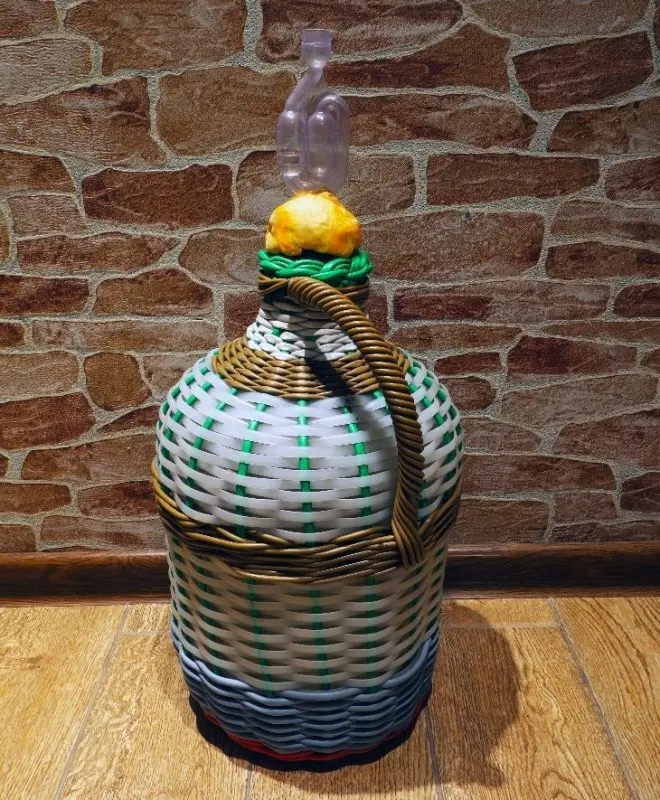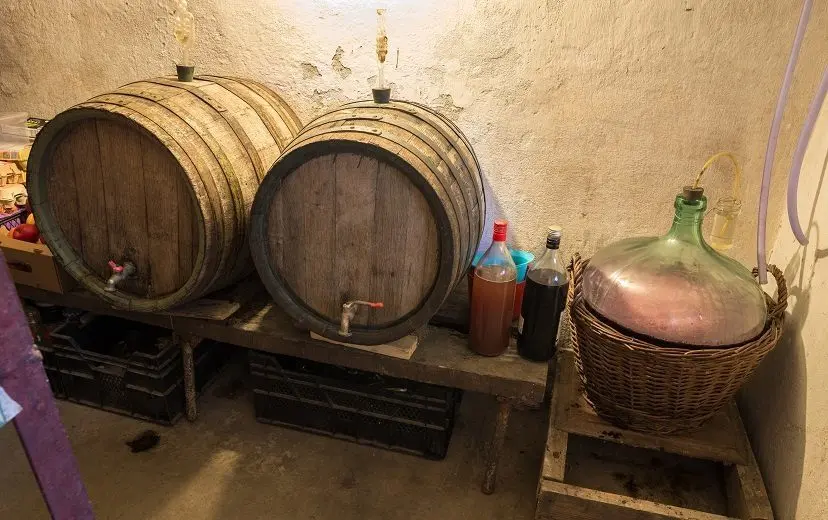Contents
The preparation of alcoholic beverages is impossible without a special container in which fermentation takes place. In many ways, the taste depends on the capacity, so the choice must be approached responsibly. We will look at the advantages and disadvantages of different types of fermentation vessels.
When choosing a suitable container, a home distiller takes into account three important parameters: material, volume and tightness.
1. Material
The fermentation container should not be metal, as the metal oxidizes on contact with the wort and spoils the drink. For the same reason, aluminum milk cans are not suitable, they can only be used as a still, since during distillation the contact time of aluminum and mash is insignificant.
Glass bottles, plastic drinking water bottles and special food-grade plastic barrels are considered the best option. It is also possible to use stainless steel containers and wooden barrels.
The advantages of glass containers are in the chemical neutrality of the material (does not come into contact with alcohol and other substances) and transparency – you can see through the walls what is happening with the wort at the moment. The disadvantages of glass containers are that they are very fragile, heavy and uncomfortable with a large volume, exposed to direct sunlight. Despite this, glass is the best choice for a home fermentation tank.

Food plastic containers are neutral to the acidic environment of the must, do not come into contact with alcohol (if the strength is below 15%), cheap, durable and relatively light, and bottles for drinking water are also transparent. The disadvantage is that bad plastic releases harmful substances into the mash, which can be harmful to health, change the taste and smell of the drink. More and more special plastic containers for fermentation appear on sale, which are gradually conquering the market. Novice distillers often put mash and wine in bottles for drinking water, with normal quality of the material there are no problems.
Attention! It is not recommended to store alcohol in plastic (possible deterioration of organoleptic properties), and if the strength of the drink is above 15%, it is generally prohibited.
Stainless steel tanks are reliable, durable, neutral to alcohol and acids in the wort, but bulky, heavy, expensive and opaque. Typically this material is used for industrial fermentation tanks or by experienced distillers who are willing to invest in equipment.
Wooden barrels and barrels are well suited for wine fermentation – they keep the temperature and protect the must from sunlight. The disadvantage of wooden kegs is that they are expensive and that they have to be thoroughly cleaned after each brewing cycle.

2. Volume
Usually glass bottles have a volume of 10 or 20 liters, and plastic – 6-60 liters. Wooden barrels come in 10, 20, 30 or more liters.
When choosing a container for fermentation, you need to remember that the mash or wine should be no more than 75% of the volume, otherwise there may be problems with foam and carbon dioxide removal.
3. Tightness
The container must be intact, without cracks and chips. A small exception is made only for wooden barrels, they slightly let air through the pores, but this does not affect the quality of the finished drink.
When buying, it is advisable to choose a container in the neck or lid of which a water seal is built in, or at least there is a place to install it, then you don’t have to drill, seal and glue anything.
Read more about the different types of fermentation tanks in the video.









